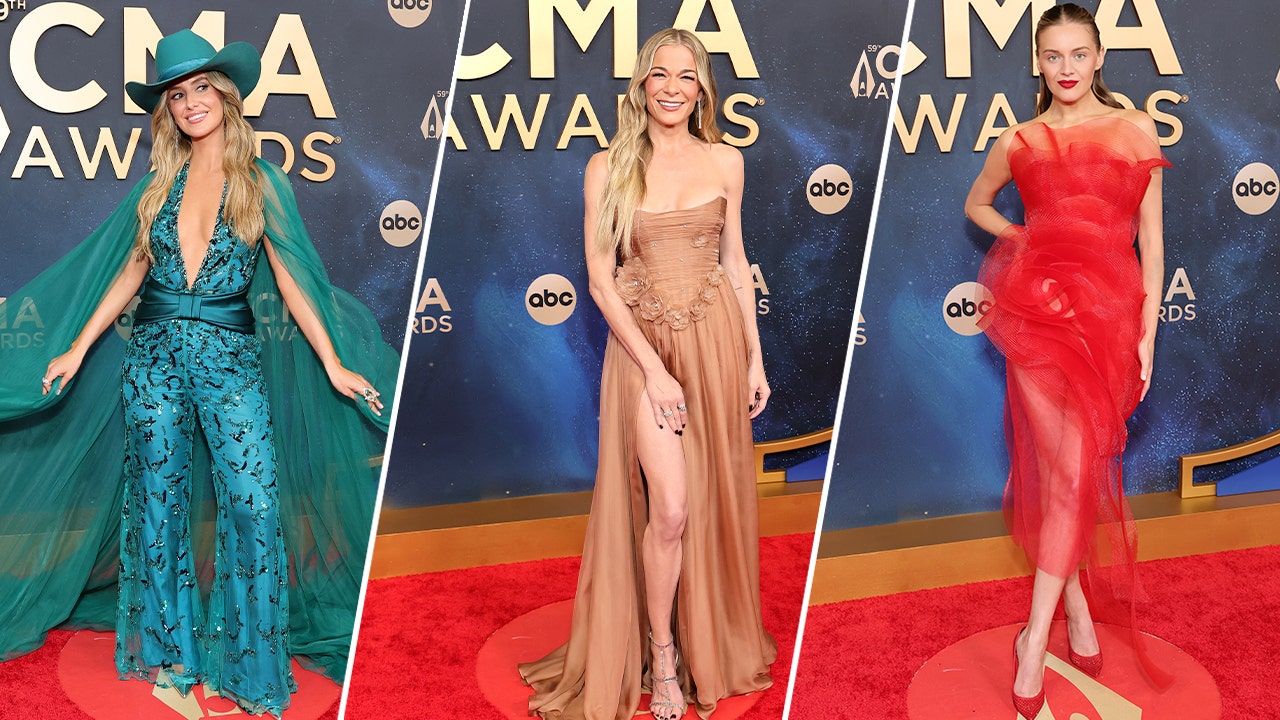The 59th Annual CMA Awards promised “Country Music’s Biggest Night™” – a night where stars like Lainey Wilson, LeAnn Rimes, and Kelsea Ballerini were reported to have “dazzled” and “stunned” on the Nashville red carpet. But let’s be brutally honest: for how many millions did this ostentatious spectacle truly serve authentic country music, and for how many more did it simply line the pockets of advertisers, stylists, and corporate sponsors?
The Real Story Behind the Sequin Sparkle
The narrative fed to the masses is one of glamour and celebration, an homage to the genre’s biggest stars. Lainey Wilson, we’re told, “stunned” in a teal jumpsuit with a plunging neckline and flowing green cape. Kelsea Ballerini “dazzled.” Such descriptors, however, barely scratch the surface of the underlying machinery. This wasn’t merely a display of personal style; it was a meticulously engineered commercial event, a high-stakes fashion show where every accessory, every designer gown, and every camera-ready smile carried a price tag – and often, a brand endorsement.
The “excitement” that “continues to build” for this “Biggest Night™” isn’t organic fan fervor alone. It’s meticulously manufactured hype, fueled by PR campaigns, social media blitzes, and strategic media placements. The red carpet, far from being a simple walkway, transforms into a battleground for visibility, a prime piece of real estate where labels vie for attention and artists become walking, talking billboards. The goal isn’t just to look good; it’s to generate buzz, to trend, and to drive consumer interest in everything from haute couture to mainstream beauty products, all under the shimmering veneer of musical achievement.
“Awards shows aren’t just about talent anymore; they’re prime real estate in the entertainment industry,” scoffs an anonymous Nashville industry veteran, speaking on condition of anonymity due to the sensitive nature of industry politics. “A dress isn’t just a dress. It’s a walking billboard for a designer, a jewelry house, or even a specific makeup brand. You think those outfits are pulled from a discount rack for fun? This isn’t just fashion; it’s a major capital expenditure, often covered by brands keen to associate with country’s biggest names. The artists get the exposure, the brands get the sales. Everyone wins, except maybe the purity of the art form itself.”
Why the Bling Matters More Than You Think
This high-stakes red carpet game isn’t merely about superficial aesthetics; it’s a fundamental pillar of modern celebrity monetization and industry power. The glitz is a distraction from the colossal sums exchanging hands. Who are the real winners when a star “dazzles”? Is it the artist whose talent is momentarily overshadowed by their wardrobe, or the fashion house that sees its stock surge? The “presenters and special guests” revealed for the 59th Annual CMA Awards aren’t just there to hand out trophies; they’re part of a larger, interconnected ecosystem designed to keep eyeballs glued to screens and wallets open.
The announcement of “winners on ‘GMA'” or other major platforms isn’t just a nod to transparency; it’s a calculated strategy to extend the commercial reach of the awards beyond the live broadcast. It ensures maximum saturation across diverse media platforms, leveraging morning show viewership to amplify the impact of every win, every performance, and every product placement. The money doesn’t just flow into record sales; it floods into sponsorships, lucrative endorsement deals, and the painstaking creation of an aspirational lifestyle, meticulously crafted and curated for mass consumption.
The Unavoidable Truth
If the country music industry continues its relentless pivot from celebrating lyrical depth and raw, heartfelt performance to prioritizing the ostentatious display of sponsored glamour and brand partnerships, it risks a profound loss of identity. The “biggest night” could very well become a hollow spectacle, an annual corporate convention masquerading as an artistic tribute. The true cost of all that dazzle isn’t just the millions spent on production and designer gowns; it’s the potential erosion of the very soul that once defined country music.


